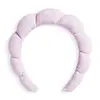Nivea Antiperspirant Deodorant Roll-On Black & White Invisible Clear Versus Revolution Beauty Pink Padded Headband
Region: Germany
Deodorant
Tool
German

British

What's inside
What's inside
 Key Ingredients
Key Ingredients

No key ingredients
 Benefits
Benefits

No benefits
 Concerns
Concerns

No concerns
 Ingredients Side-by-side
Ingredients Side-by-side

Show highlights for:
Water
Skin ConditioningAluminum Chlorohydrate
AstringentIsoceteth-20
EmulsifyingButylene Glycol
Humectant
1
/
0

Dicaprylyl Ether
EmollientGlyceryl Isostearate
EmollientLaureth-7 Citrate
CleansingPalmitamidopropyltrimonium Chloride
Glycol
HumectantPEG-150 Distearate
Emulsifying
2
/
0

Tocopherol
Antioxidant
0-3
/
0-3






Linalool
PerfumingCitronellol
PerfumingBenzyl Alcohol
PerfumingLimonene
PerfumingAlpha-Isomethyl Ionone
PerfumingParfum
Masking
 Reviews
Reviews

3.30
Overall rating
5
4
3
2
1
What people say
Great Value
67%
Light Scent
67%
Works Well
67%
5.00
Overall rating
5
4
3
2
1
What people say
Great Value
100%
No Scent
100%
Works Well
100%